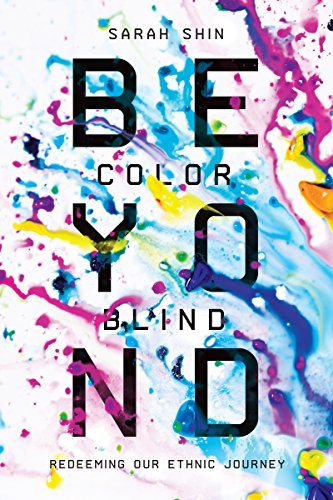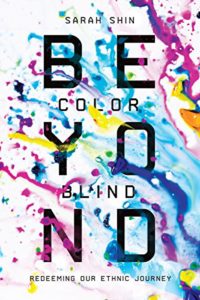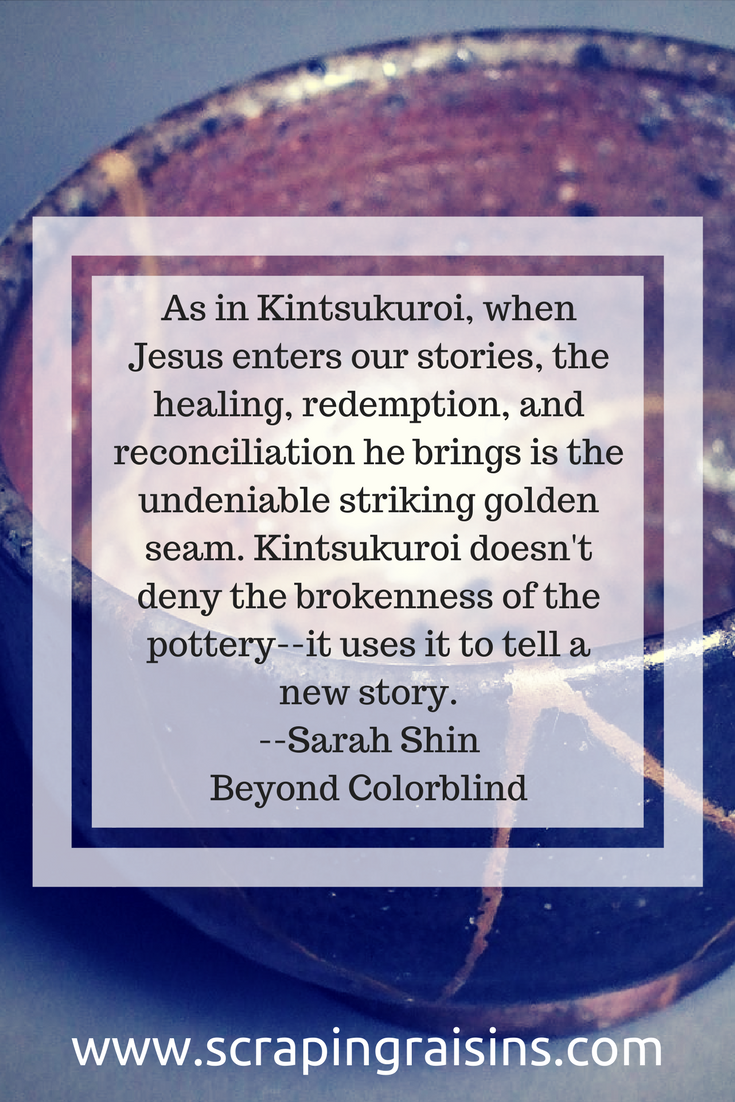
Like a cooling salve in the hands of a physician, Sarah Shin’s book, Beyond Colorblind: Redeeming Our Ethnic Journey, is written with healing hands and expert knowledge. She provides both a microscopic and telescopic view of how we as followers of Jesus look at skin color in the United States.
Throughout the book, Shin compares our ethnic stories to cracked Japanese pottery which has been repaired by pouring gold, silver or platinum into the fissure, called kintsukuroi or kintsugi pottery. This pottery is emblematic of Japanese philosophy that “treats breakage and repair as part of the history of the object, rather than something to disguise.”
Shin takes the metaphor a step further as she writes, “As in Kintsukuroi, when Jesus enters our stories, the healing, redemption, and reconciliation he brings is the undeniable striking golden seam. Kintsukuroi doesn’t deny the brokenness of the pottery–it uses it to tell a new story.” (p. 11)
Though race, privilege, white supremacy, and implicit bias can be touchy topics for some, Shin handles these issues with gentleness and care, without coming across as condescending or loading white readers down with guilt. In fact, she takes shame off the table. Instead, she affirms our unique stories of ethnicity as being celebrated and affirmed by a creative God who adores us and is able to heal us at our points of deepest sin, shame and pain.
Shin wrote in an article for Christianity Today: “It wasn’t being “colorblind” that made me grow as a believer. It was instead being aware of my ethnicity: its beauty that God wants to affirm and amplify, and its brokenness of sin, idolatry, racism, and pain that he wants to heal.”
Shin does not avoid discussing uncomfortable topics or the wounds various ethnicities have inflicted on one another. But in her confrontation, she offers hope, redemption, grace and practical steps to better communication and greater love within cross-cultural churches, communities and friendships.
For the white Christian, like me, who was raised believing the best way for followers of Jesus to relate to those of other races was to take the “I don’t see color, I only see people,” or “colorblind” route, this book offers another way. She recommends that white people recognize they, too, have a culture and ethnic heritage and challenges the reader not to equate whiteness with normalcy. Seeing color affirms the imago dei–the image of God–in our brothers and sisters of color.
Shin blends narrative and fact in a practical, yet complex book for the reader new to discussing race issues. Chapter discussion questions and a list of books for further reading are included at the end of each chapter and a few of the chapters have an online resource provided by InterVarsity Press.
Beyond Colorblind is a fantastic book to discuss if you are on a multicultural missions, college, worship, church or ministry team as a safe launching pad for discussing issues surrounding ethnicity. It might even prevent cross-cultural conflict for new groups if they can discuss some of the basic tenants of intercultural communication before conflict has a chance to flair up. Shin offers ideas for polite and impolite questions when trying to get to know someone from another ethnicity and models ways to humbly engage with people who have a different ethnic backgrounds.
She weaves biblical narratives throughout the book, sharing about Jesus’ interactions in the stories of Zaccheus and the Good Samartian, and showcases how ethnicity played a prominent role in the growth of the New Testament church.
Throughout the book, Shin continues to come back to the idea of hospitality, being together at the table, and how clarity about issues surrounding ethnicity will contribute to greater shalom and increased opportunities to invite others into relationship with Jesus.
As the United States becomes increasingly diverse, I believe this book should be required reading for church membership. How can we love one another if we don’t understand one another? I often finish reading books about racial inequality in the United States feeling heavy and hopeless, but reading Beyond Colorblind felt like fresh air skipping through an open home. Shin reminds us that hope and healing are found through Jesus, who of all people is able to redeem scars and bring beauty out of brokenness.
***
 Sign up for the Scraping Raisins newsletter by February 28th and be entered to win a copy of Beyond Colorblind! (U.S. residents only)
Sign up for the Scraping Raisins newsletter by February 28th and be entered to win a copy of Beyond Colorblind! (U.S. residents only)
Sign up for the Mid-month Digest and Secret Newsletter Here:
How is God calling you to enter the race conversation?
 This month we’re discussing racism, privilege and bridge building. If you’d like to guest post on this topic, please email me at scrapingraisins(dot)gmail(dot)com. Yes, this is awkward and fraught with the potential for missteps, blunders and embarrassing moments, but it’s necessary. Join me?
This month we’re discussing racism, privilege and bridge building. If you’d like to guest post on this topic, please email me at scrapingraisins(dot)gmail(dot)com. Yes, this is awkward and fraught with the potential for missteps, blunders and embarrassing moments, but it’s necessary. Join me?
I’ll go first.
(Consider joining the Facebook group Be the Bridge to Racial Unity to learn more about how God is moving in this sphere.)
If you are a writer, consider using the hashtag #WOCwithpens to showcase the writing of our black and brown sisters of faith every Wednesday specifically, but anytime as well! You can find the explanation for the hashtag here.
If you’re a white person who’s new to all of this, I compiled some resources to start you on your journey (because I’m not much farther ahead):
70+ Race Resources for White People
80+ MORE Race Resources for White people
Image from: https://commons.wikimedia.org/wiki/File:Kintugi.jpg



